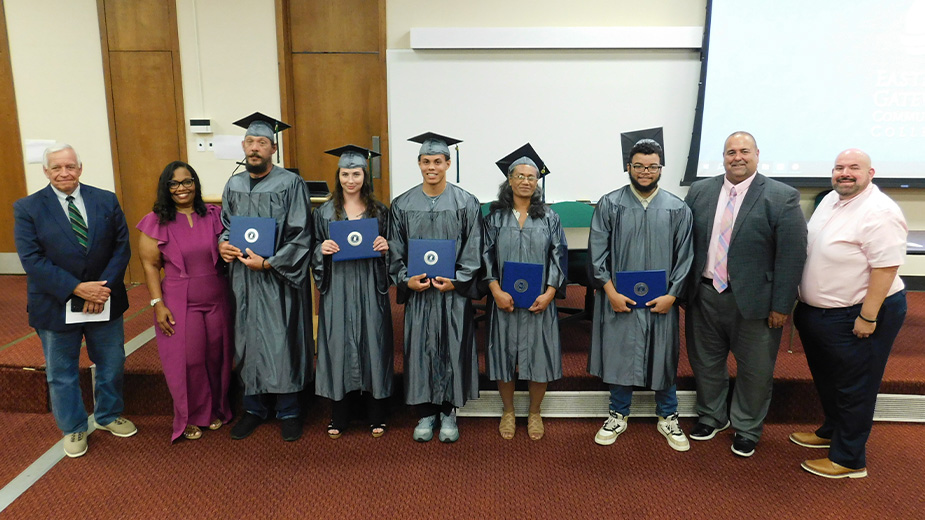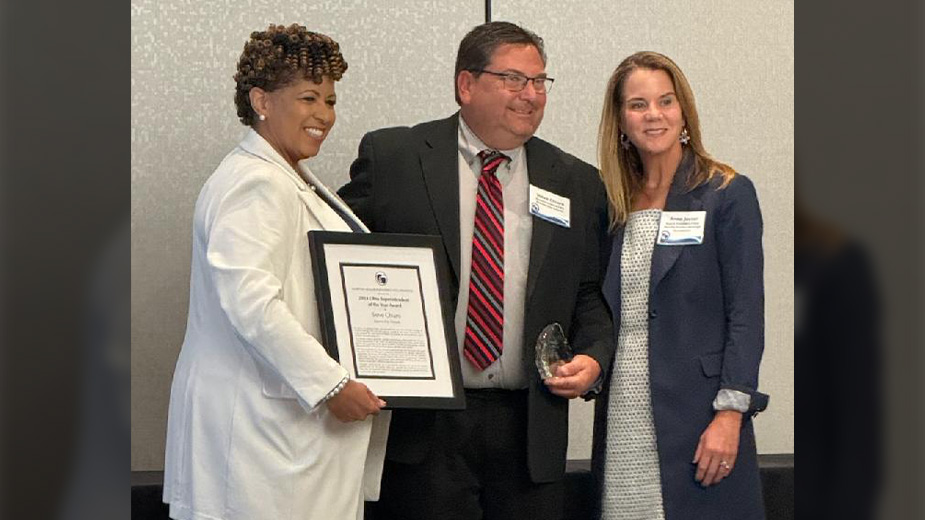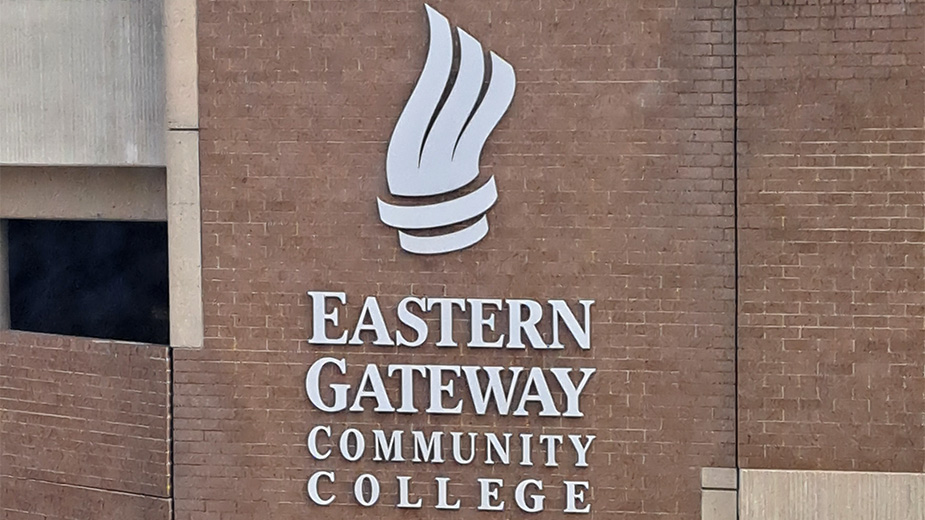Universities, Colleges Compete for Students
YOUNGSTOWN, Ohio — In the 20-plus years Jim Ritter has worked in higher education, he’s never seen enrollment decreases like those in recent years, he says.
“This is probably the first time I’ve seen enrollment down on a consistent basis year after year across the country,” says Ritter, director of enrollment management and student services and advising at Kent State University Trumbull.
Data from the National Student Clearinghouse Research Center shows college enrollment in the United States has decreased steadily the last eight years. Compared to 2018, spring enrollment dropped 1.7%, or some 300,000 students nationwide.
Fall 2019 enrollment at Kent State Trumbull is at about 2,150 students, down 80 from the same time last year. Ritter has been monitoring fall enrollment daily and says while “anything negative is bad,” decreases of fewer than 100 are par for the course.
“We have to be realistic and recognize you can’t be up every semester in this day and age,” Ritter says.
Fall enrollment is mixed among colleges and universities in the five-county region. Enrollment at Penn State University Shenango and Beaver campuses are nearly a wash compared to 2018, reports their respective directors of enrollment. Penn State Shenango is down two students to 411, but up about five full-time equivalent from 2018, reports Chuck Greggs, while Daniel John Pinchot says Penn State Beaver is up four students over last year.
“That’s a good place to be in because the higher-education market, especially in western Pennsylvania, is a challenge,” Pinchot says. “We’re not seeing any big growth in high school graduates.”
Athletics have driven “significant interest and growth” at Penn State Beaver, which participates in the United States Collegiate Athletic Association, Pinchot says. One in five degree-seeking students enrolled there is a varsity athlete, he says, and 40% of its incoming students this fall are from 28 states outside of Pennsylvania, up from 30% in 2018 and 21% in 2017.
“At least two-thirds are coming to us because of athletics,” he says. “The other third just want the small campus experience.”
Enrollment was a point of concern for Youngstown State University President Jim Tressel during his state of the university address in August. Enrollment for fall 2019 stands at 12,155, down 541, or 4.3%, from this time last year – the biggest year-over-year drop for the university, reports spokesman Ron Cole. Full-time equivalent enrollment dropped by 381, or 3.6%, after three consecutive years of increases.
YSU had been “hoping for and planning for a flat enrollment” this year, says Eddie Howard Jr., vice president for student affairs. However, as the number of high school graduates decreases across the country, the pool from which YSU can recruit freshmen is shrinking.
“As a result, we will be competing more and more for the best and brightest students,” Howard says.
In his study, “Demographics and the Demand for Higher Education,” Carleton College economics professor Nathan Grawe reports census regions that include Ohio and Pennsylvania will likely see some of the worst declines in college-bound high school seniors through 2029.
For the Middle Atlantic region, which includes Pennsylvania, New York and New Jersey, Grawe forecasts a 17.9% decline, or 72,208 students. The East North Central region, which includes Ohio, Michigan, Indiana and parts of Wisconsin and Illinois, stands to lose 90,443 college-bound seniors, a 21.6% drop.
This outlook has higher education institutions refining the way they reach out to college-bound seniors. For instance, Westminster College merged some positions just four months ago.
“I literally have two offices,” says Jeff Coker, vice president for academic affairs and enrollment and dean of Westminster. “We’re only just now tapping into the advantages.”
Having one person oversee both academic affairs and enrollment allows the offices to better coordinate their efforts to efficiently connect families and students with what they need and want, he says.
“The purpose is to give students and families a more seamless experience from first contact all the way through graduation,” Coker says.
To attract students from other areas, Kent State Trumbull this year introduced its $1,000 Trumbull Transfer Scholarship for any student with at least a 2.5 GPA transferring to the campus for a bachelor’s degree, Ritter says.
“When you put emphasis into transfer students, then you don’t have to worry about population, especially when you talk about online students,” he says.
The national economy plays a role in the decline of college-bound seniors, adds YSU’s Howard. When the economy is doing well, “a lot of people don’t choose to go back to school” upon graduating high school. Rather they work for a year before going to college, he says.
“When the economy is bad, people come back to college in droves because they want to get training to get a job,” he says.
While a bulk of YSU’s incoming students are from the Mahoning Valley, the university is finding success recruiting elsewhere by leveraging its tuition rates and curriculum in technology and health care, Howard says. Partnerships with organizations such as the Youngstown Business Incubator have led to advanced manufacturing programs “that have national recognition,” he says. “We want to be a leader when it comes to 3D printing” as well as developing a sense of entrepreneurship and technology.
Traditionally a commuter campus, new student housing units like the forthcoming Campus Lofts will “provide about 300 more beds” for YSU students in fall 2020, Howard says. This helps YSU court out-of-state and international students, one area where YSU has seen recent growth.
“We were not an institution that had a huge number of international students,” Howard says. “In the last five years, we’ve grown that from a couple hundred to about 500 students.”
YSU looks to increase international students to up to 700 next year, he notes.
Fall enrollment at Westminster is “historically normal” at 1,170, Coker says. The college is on track to welcome more than 300 new students this year, which he credits to $25 million in campus improvements over the last three years. That includes the $11.2 million expansion of the Hoyt Science Center (see story on page 38), as well as renovations to first-year residence halls, a new music hall and the Westminster Entrepreneurship Center, Coker says.
Every major has been adjusted to “the modern student’s needs,” he continues. A grant from the Council on Undergraduate Research provided a boost for psychology and biology research at the college.
“Any student going through those programs is getting exposed to doing research like any scientist would,” he says.
To meet new interests among environmental science majors, Westminster introduced a B.A. in environmental studies to focus on environmental law, policy and corporate sustainability.
At Kent State Trumbull, newly installed Zoom Rooms equipped with video technology allow faculty to teach students at multiple campuses, Ritter says. This is beneficial as the campus has seen evening course registrations “drop dramatically” in favor of online courses, he says. The campus has drawn students from Streetsboro, Cincinnati and Columbus.
“It’s amazing how with our online classes, I’m seeing students apply from where they never would have applied before,” Ritter says.
Also important is assisting students in getting into the right major, ensuring they graduate and retaining them in the community, says Jo Anne Carrick, campus director and academic officer, Penn State Shenango.
“What we’re focusing on once they get here, is has it been a pragmatic decision, and does the student know what their direction is going to college?” Carrick says. “Having that conversation early on helps them find a successful pathway to reduce the cost of taking extra credits unnecessarily.”
Faculty discuss majors during the admission process and on the first day of classes, she says. Advisers work with students to help them understand finances and the pathways to graduation.
“We’re not going to wait for them to come to us. We’re going to them,” Carrick says.
Sitting on boards for eCenter@LindenPointe and the Shenango Valley Chamber of Commerce allows Carrick to engage students with the community, she adds. Those efforts have “really retained a lot of our students to stay in this community,” she says.
“Shenango campus is currently partnering with the Penn State University’s College of Nursing to host a Master of Science in Nursing (MSN), Nurse Practitioner programs in Family/Individual Across the Lifespan, Nurse Practitioner and Adult Gerontology Primary Care. This provides our RN to BSN graduates and BSN graduates from other colleges the opportunity to earn this graduate degree locally,” Carrick says. “In the fall, we will start a new baccalaureate degree program, Health Policy and Administration, which is primarily classroom instruction, along with some technology enhanced classes.”
Copyright 2024 The Business Journal, Youngstown, Ohio.



